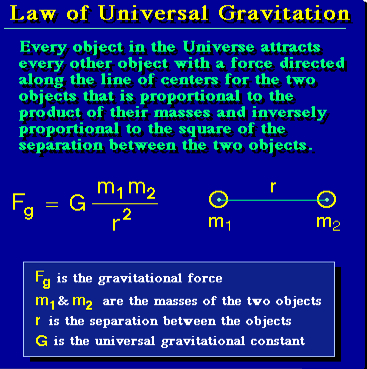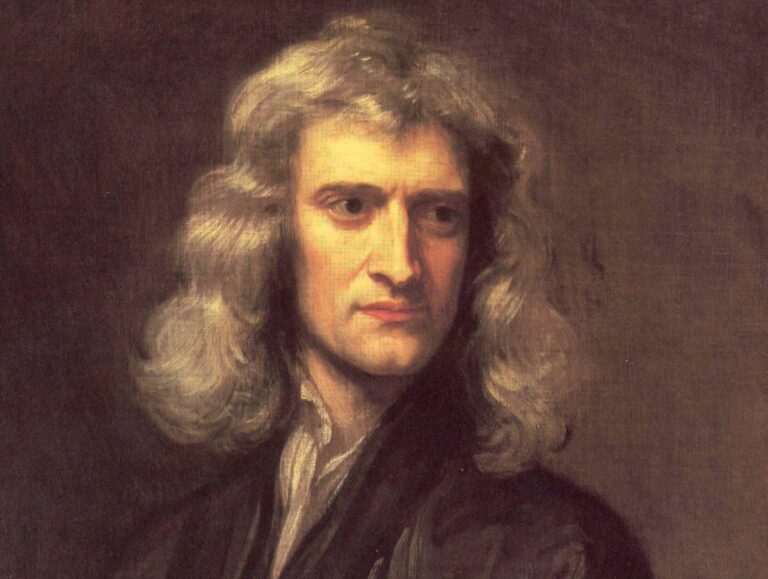Sir Isaac Newton, described as a natural philosopher in his days, was an English mathematician, physicist, and astronomer.
Newton is one of the most famous scientists till date (perhaps contended by Einstein). His work changed science, physics and the entire world with it. Thus, he is also regarded as the father of physics.
Newton is best associated with his work in theorizing gravitation, contained in Newton’s law of universal gravitation. He also developed calculus (a matter embroiled in controversy).
He also conducted many experiments on light and spent a large amount of time dedicated to the field of alchemy.
I do not know what I may appear to the world, but to myself I seem to have been only like a boy playing on the sea-shore, and diverting myself in now and then finding a smoother pebble or a prettier shell than ordinary, whilst the great ocean of truth lay all undiscovered before me.
– Sir Isaac Newton
His work on classical mechanics started the mechanistic approach to natural sciences, an approach that would change the course of physics.
Using what are now known as Newton’s Laws of Motions one could predict the movement of most particles in the Universe. Coupled with classical electrodynamics and Newton’s Law of Gravitation it applied excellently to everyday objects and real-life situations.
Nature and nature’s laws lay hid in night;
God said “Let Newton be” and all was light.
Eloquently summarised in Alexander Pope’s epitaph on Newton’s tomb. We can seem to infer the revolutionary work that Newton had done. He had fundamentally changed science through his laws and work.
Newton’s work also included theoretical suggestions towards Newtonian Fluids, empirical elucidation of Newton’s Law of Cooling. He also gave the first theoretical calculation of the speed of sound.
As a mathematician, he had worked on cubic curves, characterising 72 of the 78 species of cubic curves present in cubic planes. He had also developed a method of approximating the roots of function (called the Newton-Raphson method). He is also known for generalising the binomial theorem to non-integer exponents.
Index
Newton’s Life
Newton was born on the 4th of January in 1643 at Woolsthorpe Manor in Woolsthorpe-by-Colsterworth, a hamlet in the county of Lincolnshire.
His father (also named Isaac Newton) who was a farmer had died 3 months prior, and his mother Hannah Ayscough had had Newton prematurely. His mother would remarry when Newton was three, leaving him the care of his maternal grandmother, Margery Ayscough.

Newton would study at The King’s School, Grantham. At school, he seemed to be more interested in conducting his own experiments rather than study the coursework.
Following the death of his step-father, Hannah would force Newton to become a farmer, much to his protest. However, under pressure from his headmaster from school, she’d send Newton to Trinity College, Cambridge.
Newton would join Trinity College in 1661, getting his Bachelors in Arts in 1665. His studies in college would be diverse, but he would particularly be influenced by the works of Rene Descartes, in particular ‘Geometry’.
However courtesy of the Great Plague, Trinity College was temporarily shut down, and Newton retired to his home in Woolsthorpe. At home, over the course of two years he conducts experiments as well as develop theories. This work would influence and supplement the later published work in the fields of Calculus, Optics and Gravitation.
He would return to Trinity College in 1667, becoming a fellow. He would go on to earn a Masters in Arts in 1668.
In just about a year, he would take the Lucasian Professor of Mathematics at the University of Cambridge. Newton became the second person to do so after Isaac Barrow. Newton had impressed Barrow with his mathematical papers in particular ‘De analysi per aequationes numero terminorum infinitas (or On analysis by infinite series)’. Barrow was instrumental in Newton’s appointment as a professor.
The Lucasian Professor of Mathematics at the University of Cambridge is one of the most prestigious positions in the world. It has been held by stalwart scientists, all bigwigs in their respective fields. This includes the likes of great names such as Isaac Newton, Charles Babbage, Paul Dirac and the charismatic Stephen Hawking!
Newton would elect to teach on optics from 1670-72. Following this he’d continue research in the field of optics and write a variety of academic papers and transcripts. This would result in one of his more famous works ‘Opticks: or, A Treatise of the Reflexions, Refractions, Inflexions and Colours of Light’ in 1704 which would introduce new ideas and elaborate older concepts.
In 1679, Newton returned to his work on celestial mechanics releasing the classic text Philosophiæ Naturalis Principia Mathematica (Latin for Mathematical Principles of Natural Philosophy) in 1687, further edited into versions in 1713 and 1726. ‘Principia’ would go on to change the world, and become what many believe the most important science text ever.

For the last half of Newton’s adult life, 30 years, he was at the Royal Mint. He was appointed as the warden in 1696. When he became Master of Royal Mint in 1710, he would give up his position at the University of Cambridge
Newton would also become the president of the Royal Society in 1703. He held this and the Master of the Mint positions till his death in 1727.
In April 1705, Queen Anne knighted Newton during a royal visit to Trinity College, Cambridge. This made him Sir Isaac Newton.
In the later part of Newton’s life, he would suffer from the ill effects of mercury poisoning due to his experiments in alchemy.
He would become extremely eccentric, having numerous nervous breakdowns and physical ailments. He would suffer from insomnia and poor diet and also from a gallstone. Newton would pass away in his sleep on 31 March 1727.
Newton and His Science
Calculus and Controversy with Leibniz
Newton had begun working on what he termed ‘fluxions and fluents’, what became essentially infinitesimal calculus in the year 1666 when he was only 23.
For fear of criticism as the idea was novel, he didn’t publish it initially. The method of fluxions would be central to Newton’s iconic text ‘Principia’. But here’s where the problem started.
Gottfried Wilhelm Leibniz had begun working on what was to become differential calculus, albeit after Newton, in the year 1674. He published his work in 1685 titled, ‘Nova Methodus pro Maximis et Minimis’ (Latin for a new method of maximas and minimas), the paper being titled as the ‘birth of infinitesimal calculus’.
‘Principia’ was released in 1687 marking the start of a war between Leibniz and Newton that would last until Leibniz’s death in 1716.
Newton explained the geometrical part of his method in ‘Principia’ in 1687 and the notational aspects in part in 1693 and in full in 1704. In an essence, it was Newton’s word against Leibniz.
While Newton argued that Leibniz had stolen his ideas and simply changed notation, Leibniz argued that he had developed it independently. Groups formed around both scientists. The Royal Society proclaimed in a study that it was Newton who was the true discoverer and labelled Leibniz a fraud in 1711.
A bitter feud ensued between both sides with claims followed by counterclaims. Sadly the last years of Leibniz’s life were embroiled in fights over this issue.
In the modern sense, after analysis of documents by both scientists, it has been established that both had developed calculus in their own way. There was no form of plagiarism involved.
Moreover, as of now Leibniz’s notational form( to use dx and dy) is commonplace. Calculus is truly a very powerful tool, with its application still prevalent in many senses. Differential Equations still form a very important part of modelling and describe many physical systems accurately. Calculus is perhaps one of the most important mathematical contributions by Newton.
Classical Mechanics and Controversy with Hooke
Philosophiæ Naturalis Principia Mathematica (Latin for Mathematical Principles of Natural Philosophy) published in 1687 is considered one the most important scientific texts. It marked the start of something special, the start of a revolution in science.
No more was science mere conjecture and hypothesis, it included rigours mathematical offering. The beginning of determinism started, giving us the ability to predict the motions of planets and bodies. ‘Principia’ is in essence entirely calculus, as Newton uses the empirical Kepler’s Laws of Planetary Motion to mathematically describe his law of gravitation. The most unique feature about the law of gravitation is its inverse square nature. ‘Principia’ also introduced the powerful Newton’s Laws of Motions.
The controversy with Robert Hooke arose from the fact that Hooke through a letter had talked to Newton the beginnings of the inverse square law. Hooke could not prove his hypothesis, but Newton independently developed it with no mention of Hooke in his papers. Arguments ensued which eventually resulted in Newton acknowledging Hooke in later editions of ‘Principia’.

The development of classical mechanics was instrumental to science in many ways. Calculus and Mechanics became powerful tools to explain many physical phenomena. They introduced a mechanistic approach to science that changed it in every essence.
Newton used his mathematical description of gravity to prove Kepler’s laws of planetary motion, account for tides, the trajectories of comets, the precession of the equinoxes and other phenomena. All this eradicated the doubt about the Solar System’s heliocentricity.
Experiments with Light
With his experiments on light interactions with prisms, Newton developed his theory of colour. Newton believed that light was made out of particles. He argued this by proving through experiment, that if two prisms were used, the spectrum of light that was produced as a result of dispersion could be reconverted back into white light using a second prism. The light was according to Newton made out of particles called corpuscles. A claim that is partially true right now, with light having wave-particle duality.
He argued that the refracting lenses used in telescopes would result in dispersion of light and a subsequent loss of colour (termed chromatic aberration). For proof of concept, he designed the first reflecting telescope, using mirrors, now known as the Newtonian Telescope.
Newton and the Apple Tree
A discussion on Newton would be incomplete without talking about the Apple Tree. While there are many variations of this ‘story’, in essence, it says that Newton’s desire to understand gravity came from questioning why the apple fell down. While some scholars declare it false, and others add a spin to it stating that an apple fell on his head while he was sitting under the tree the true origins lie somewhere else.
The story originated from Newton’s niece, who he was on very good terms with. His niece narrates that Newton talked about how an apple falling from the tree had started him on the pursuit of gravity as he drove to answer the question: ‘Why did the apple fall from the tree?’
But in my opinion, the apple represents something bigger. An innate desire of the human species to understand everything, a curiosity that remains unquenched. Science is about asking questions, and working towards finding its answers. By working on the simple question of why the apple fell from the tree, Newton has changed the world. If humanity strived towards answering questions of life, physics and everything else, it would make the human species better.
Is Newton the greatest scientist that has ever lived? Probably, yes. Will Newton be the greatest scientist to ever live? Definitely, not.

